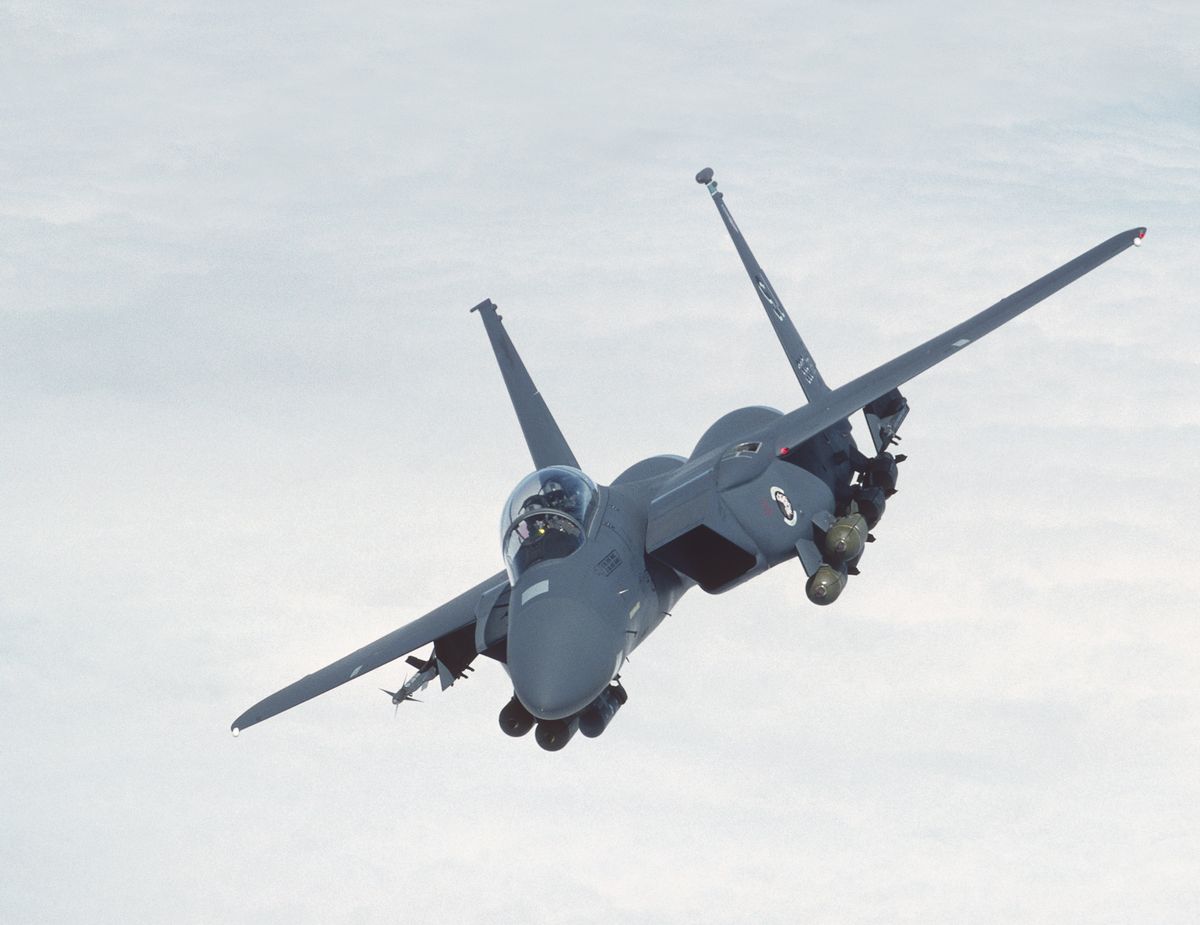F15 V F16 - Military Aircraft - Post-Cold War aircraft such as the B-2, Gripen, F-18E/F Super Hornet, Rafale and Typhoon.
Why were leading edge flaps and leading edge extensions never implemented on any version of the F-15? Even though some F-4 versions have leading edge flaps to improve close combat capabilities, the F-5 has both LEF and LERX, technologies that should have been available when the F-15 was designed.
F15 V F16
There is a version of the F-15MTD with both canards and TVCs, why was something like LEF and LERX never tested?
Taiwan Suspends F 16 Training Missions After Jet Crashes
The F-15A has a very large cantilevered shoulder-fired fixed geometry wing swept back at 45 degrees. The wing area is 608 square feet, providing low wing loading and excellent combat agility. The wings are set to zero angle of attack and have a slight bank (1 degree) to reduce stability in the roll plane. The fin is a multi-unit, three-spar structure with multiple rigid skins. Unlike some other modern fighter jets, the F-15A has conventional outboard ailerons and conventional flaps, and no other control surfaces. Notably, there are no spoilers or leading-edge extendable slats installed. The wing area is large enough that no slotting or blowing is required to achieve acceptably low landing speeds. The use of variable camber with movable surfaces on the leading and trailing edges of the wing was ultimately rejected by the design team because a fixed leading edge design with conical camber provided only slightly greater supersonic drag. And only slightly reduces subsonic performance. Both of these are offset by advantages in terms of reduced weight, structural simplicity and ease of maintenance. Early in the development program, the manufacturer added three wingtips to the trailing edge of the wingtips on each side, beginning with aircraft 4, to correct a problem with severe jitter at speeds between Mach 0.9 above 30,000 feet Square footage is removed. and 0.95 and 6g or more. This creates the F-15's distinctive forward-sloping wingtips.
I also think putting anything in front of the F-15's variable intake ramp would make the design much more complicated than it currently is:
Basher54321 wrote: Think you need an F-15.net http://www.joebaugher.com/usaf_fighters/f15_2.html The F-15A has a very large, cantilevered, shoulder-fired fixed geometry wing that sits 45-degree angle. The wing area is 608 square feet, providing low wing loading and excellent combat agility. The wings are set to zero angle of attack and have a slight bank (1 degree) to reduce stability in the roll plane. The fin is a multi-unit, three-spar structure with multiple rigid skins. Unlike some other modern fighter jets, the F-15A has conventional outboard ailerons and conventional flaps, and no other control surfaces. Notably, there are no spoilers or leading-edge extendable slats installed. The wing area is large enough that no slotting or blowing is required to achieve acceptably low landing speeds. The use of variable camber with movable surfaces on the leading and trailing edges of the wing was ultimately rejected by the design team because a fixed leading edge design with conical camber provided only slightly greater supersonic drag. And only slightly reduces subsonic performance. Both of these are offset by advantages in terms of reduced weight, structural simplicity and ease of maintenance. Early in the development program, the manufacturer added three wingtips to the trailing edge of the wingtips on each side, beginning with aircraft 4, to correct a problem with severe jitter at speeds between Mach 0.9 above 30,000 feet Square footage is removed. and 0.95 and 6g or more. This creates the F-15's distinctive forward-sloping wingtips.
So basically, the F-15 doesn't have LEF and LERX for weight and maintainability? Looks a bit wasteful to me, if LERX and LEF were implemented it could be a better dogfighter than low altitude as it already has very low wing loading
U.s. Moves Closer To Selling F 16 Fighter Jets To Turkey
Botsing wrote: The front where the wings connect to the body is some kind of thick LERX. See how they (and intake ramps?) create vortices:
IIRC JohnWill says the LERX needs to be sharp to create the vortex, while the F-15 wing glove is rather blunt. It might be able to generate eddy currents, but much worse on a proper LERX, e.g.
Garrya wrote: So basically, the F-15 doesn't have LEF and LERX for weight and maintainability? Looks a bit wasteful to me, if LERX and LEF were implemented it could be a better dogfighter than low altitude as it already has very low wing loading

The F-5 has both leading edge slots and leading edge extensions, but still lost to the F-15 in dogfights, I think the strength comes from negative stability tail lift and T/W
Fully Armed Grim Reaper F 15 Eagles Arrive In Poland In Response To Russian Build Up
If Boyd had his way, it could have been more, but what he did probably fit the USAF's requirements, so it was deemed good enough - I remember Harry Hilleck in a meeting with his design team The last comment said they went with the less risky traditional design because of the cost and the time involved.
Also about the compromise - I read that the size is somewhat dictated by the radar dish they want to put in the nose - if they added LEF they might have to put the AIM-9 on the drop tank The side of the shelf Is.
Basher54321 wrote: Regarding the compromise - I read that its size is somewhat dictated by the radar antenna they want to put in the nose - if they increased the LEF they would have to put the AIM-9 on the edge of the drop would have been There can be a tank pylon.
This is also a consideration for the F-4E. Finally, the F-15's cornering performance has always been good. Increasing LEF adds weight, which reduces acceleration and climb performance, even though we assume the added lift outweighs the added weight in cornering.
Boeing F 15x Eagle Vs Lockheed Martin F 16 Block 70 Fighter Jet
I'd love to see a switch to a Si-229 motor for continued performance improvements, but that's an expensive pipe dream. I once had a chance to talk to the F-15 Active team and I asked if they put the -229 in it and they just smiled and said "big".
Sprstdlyscottsmn wrote: I had a chance to speak to the F-15 Active team once, I asked if they put the -229 in and they just smiled and said "big".
The -232 with TVC was tested up to 37,150 lbs of thrust in the 90's, so that's probably what they were referring to.

A brief description of the test used to be on P&W, but it has long since been removed. The same engine was tested using TVC.
Su 27 And Su 30 Against F 16 And F 15 Who Win ?
Ceferin wrote: The -232 with TVC was bench tested in the 90's to 37, 150 lbs of thrust, so that's probably what they were referring to.
I feel the same. Think of those engine hawks...you have to be very gentle with your afterburner or you'll run out of gas pretty quickly.
Therefore, the designers opted for a large wing area and a relatively thick curved wing profile. But while that helps, more needs to be done to compensate for the lack of high-lift equipment with automatic leading and trailing edges. So the next step is to increase the lift that can be achieved through the fuselage, adding a full move intake ramp is one of the main ways to solve this = since AOA is used for these to delay upward boundary layer separation deflection increases top fuselage down to cover the area, thereby significantly increasing the lift generated by the fixed intake.
Combining these three points, 1) low wing loading 2) thick curved wings and 3) all the moving air intakes help the F-15 achieve a very respectable lift-to-weight ratio, even though it doesn't have wing mounted high lift device.
General Dynamics F 16 Fighting Falcon
That said, the penalty for the lack of any automatic LE and TE slats and/or flaps isn't entirely negated, so the F-15 is best suited for keeping up quick fights, as other teenage fighters have different - to varying degrees - traits. Better low RO medium speed ITR and STR.
Interesting to see the variable intakes have an attachment to reshape the airflow through them to wrap more of the midline of the body. The airflow through the intake should not be altered.
Rockwell's FX proposal is designed more like the one you describe, and is aerodynamically less stable than fly-by-wire. This is a development of the A-5. The F-15 Eagle first flew in 1972 and entered service with the U.S. Air Force in 1974. Eagle's most notable features are its excellent acceleration and maneuverability. It was the first U.S. fighter jet with an engine larger than the aircraft's base weight, enabling it to accelerate in vertical climb. It has the characteristics of large power, light weight and large wing area

F16 vs f15, f15 f16 f18 f22 f35, f14 f15 f16 f18, difference between f15 and f16, f16 f15, f14 vs f15 vs f16 vs f18, f15 and f16, f14 f15 f16, f15 vs f16 dogfight, f16 v, f15 vs f16 vs f18, f15 f16 f18

0 Comments